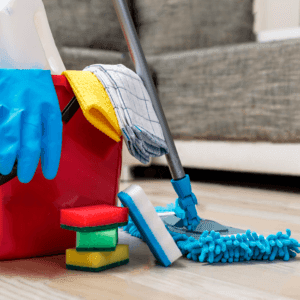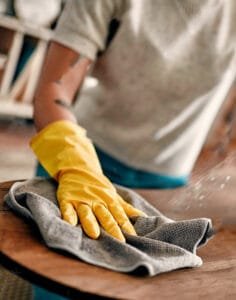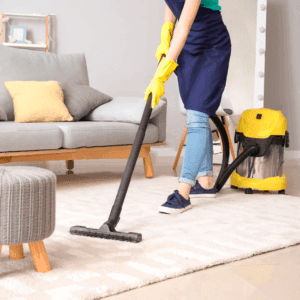A clean home isn’t just about appearances; it’s a vital part of maintaining optimal health. From reducing allergens to preventing mold and bacteria buildup, regular cleaning habits can significantly improve your indoor air quality and overall well-being. But what exactly constitutes a healthy cleaning routine? And what do experts recommend when it comes to creating a home that supports physical and mental health?
In this article, we break down expert insights on routine cleaning practices that lead to a healthier home environment.
1. The Link Between Cleanliness and Health
According to the Centers for Disease Control and Prevention (CDC), regular cleaning can reduce the spread of infectious diseases, minimize allergens, and create a safer environment for those with respiratory issues. Dust mites, pet dander, and mold spores thrive in neglected spaces, triggering asthma and allergy symptoms.
Experts agree: routine cleaning isn’t just hygienic; it’s preventative healthcare.
2. High-Touch Surfaces: Clean Often, Not Just Occasionally
Dr. Emily Collins, a home health and safety specialist, recommends prioritizing high-touch areas like
- Door handles
- Light switches
- Countertops
- Remote controls
- Bathroom fixtures
These surfaces harbor more bacteria and viruses than other parts of the home. Experts suggest disinfecting these zones at least once a day, especially during cold and flu season.
Pro Tip: Use an EPA-registered disinfectant and let it sit for the recommended dwell time for maximum effectiveness.
3. Air Quality and Dust Management
Airborne dust can contain harmful particles like pollen, pet dander, and even toxic chemicals from household products. Poor indoor air quality contributes to fatigue, headaches, and long-term respiratory issues.
Expert Suggestions:
- Vacuum carpets and upholstery at least twice a week with a HEPA-filter vacuum.
- Use a damp microfiber cloth to dust surfaces (dry dusting just spreads particles).
- Clean or replace HVAC filters every 1-3 months.
Want an easy upgrade? Invest in an air purifier to catch ultra-fine particles and reduce airborne allergens.
4. Kitchen and Bathroom: Bacteria Hotspots
The kitchen and bathroom are two of the most bacteria-prone areas in the home. According to the National Sanitation Foundation, the kitchen sink and sponge are among the dirtiest items in the household.
Expert-Approved Cleaning Tips:
- Disinfect sinks and countertops daily.
- Replace dish sponges every week or microwave them damp for 2 minutes to sanitize.
- Scrub bathroom tiles and tubs weekly to prevent mold growth.
- Please keep in mind the toilet flush handle and faucet knobs.
5. Floor and Entryway Maintenance
Shoes track in a surprising amount of bacteria, pesticides, and allergens. Experts recommend setting up a no-shoes policy indoors and cleaning floors regularly.
Routine Tips:
- Mop concrete floors once a week with a mild, non-toxic cleaner.
- Shake out and vacuum doormats twice weekly
- Sanitize pet paws if they go outdoors frequently.
6. Decluttering: The Unexpected Health Booster
Clutter not only affects mental clarity but also collects dust and obstructs effective cleaning. Dr. Sarah Greene, a wellness coach, notes that a decluttered space can reduce anxiety and improve sleep quality.
How to Start:
- Focus on one area per week
- Donate unused items
- Use bins or baskets to organize common areas.
A tidy home makes routine cleaning faster and more effective.
7. Eco-Friendly Cleaning for Health and Safety
Many commercial cleaners contain volatile organic compounds (VOCs) that can irritate the skin, lungs, and eyes. To avoid introducing harmful chemicals into your home, switch to green cleaning products or make your own using ingredients like vinegar, baking soda, and essential oils.
Natural Cleaning Alternatives:
- White vinegar for disinfecting
- Baking soda for scrubbing and deodorizing
- Lemon juice for cutting grease and brightening surfaces
8. Set a Cleaning Schedule That Works for You
Experts recommend dividing cleaning tasks into daily, weekly, and monthly goals to stay on track without becoming overwhelmed.
Example Schedule:
- Daily: Wipe down counters, clean dishes, sanitize high-touch surfaces
- Weekly: Vacuum, mop, change bedding, scrub bathroom
- Monthly: Deep clean appliances, wash windows, organize pantry
Using a digital or printed cleaning checklist can help keep your routine consistent.
Conclusion: Consistency Is Key to a Healthier Home
You don’t need to spend hours a day cleaning to maintain a healthy home; just a few intentional habits each week can make a huge difference. With insights from health and cleaning experts, you can prioritize the most impactful tasks and create a space that supports physical and emotional well-being.
Whether you’re managing a busy family household or simply looking to improve your daily living environment, a smart routine cleaning schedule is one of the best tools for lasting wellness.
Remember: A healthier home begins with mindful maintenance. And if you need a professional boost, consider hiring routine or deep cleaning services to get you started on the right track.







